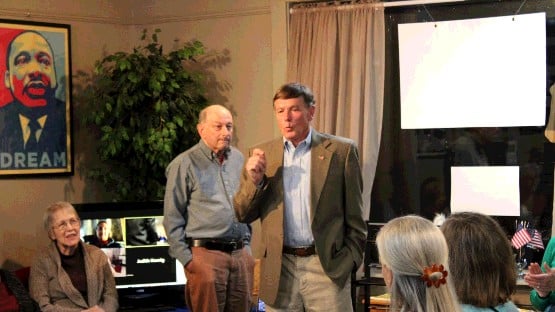
Politics and Policy
The New York Times’ Lisa Friedman examined Biden’s climate plan’s perilous path through Congress. Senate Republicans unveiled their $928bn infrastructure counteroffer. Grist examined what’s in it. A growing number of Democrats is impatient with bipartisan infrastructure talks, preferring to move on. Biden supposedly will rely on allies to supply the bulk of metals needed to build batteries for EVs, and focus on processing them domestically into battery parts. DOE awarded $19mn to 13 research groups to assess how much rare earth material is contained in coal and coal waste, and to explore ways to extract it. The federal government plans to allow wind power projects to be built in federal waters off California’s coast. Inside Climate News reviewed the issues that have hampered California’s offshore wind development. California is allocating $20mn and $110mn from its 2021-2022 budget to support the development of offshore wind and green hydrogen, respectively. Public agency data indicates the slow and inconsistent permitting processes across most of the 400 local California jurisdictions are key impediments to converting available funding into EV charging infrastructure. Arizona regulators voted to revive a suite of clean energy requirements; the compromise will extend Arizona’s decarbonization timeline through 2070.
ExxonMobil shareholders voted to install two new independent directors to the company’s board. A Netherlands court ordered Shell to slash its carbon pollution 45% by 2030. Chevron Corp shareholders voted to cut emissions generated by use of the company’s products. E&E News considered what these events might mean for the oil industry; RMI’s Center for Climate‑Aligned Finance had a rundown of 2020’s other major shareholder efforts. Forest ecologist Charles Canham had an essay about US forest carbon offsets, writing: “Our forests can and will continue to provide critically important offsets to carbon emissions. But marketing those offsets to allow emitters to continue to pollute may simply be unethical.” Environmental justice advocates urged North Carolina’s governor to block permits for future wood pellet plants and pay more attention to their effects on health.
House Democrats intend to clear a resolution to curb methane emissions; a final vote could be weeks away because the House Energy and Commerce Committee will first consider and debate the resolution attempting to shield it from litigation. The Biden administration is defending a huge Trump-era oil and gas project in the Alaskan North Slope designed to produce 100,000+ barrels of oil/day for the next 30 years. The administration said it planned to revise a Trump-era rule limiting the ability of states and tribes to veto pipelines and other energy projects that could pollute their local waterways. The Wall Street Journal responded to a Biden executive order directing several federal departments and agencies to analyze climate change risks to the US financial system and federal government, writing “Rule by the climate technocrats is coming fast.”
After nearly two days of wrangling at a meeting of the G7 environment and energy ministers, all reaffirmed their commitment to limiting global warming to 1.5°C, agreeing to end their financial support for coal development overseas. Countries worldwide raised $53bn last year with carbon emission pricing schemes, up ~18% from 2019; some imposed new levies and prices in some existing schemes. China conducted trial runs of its national‑level carbon emission trading system to ensure the system’s successful launch in late June. ~72% of the coal-fired power plants being built globally now rely on Chinese funding. Australia’s federal court found the environment minister has a “duty of care” to protect young people from the climate crisis. Poland’s government defied a top EU court injunction ordering the immediate closure of a major brown coal mine. Yale Environment 360’s Fred Pearce dove into arguments around pledges of net‑zero CO2 emissions by 2050, asking whether “net-zero” is key to limiting global temperature rise or a dangerous delusion.
Climate and Climate Science
Large areas of the US Southwest are under “exceptional drought” conditions. Scientists and wildfire managers are concerned the region is entering the fire season in worse shape than last year. For the last two decades, Yellowstone National Park has warmed at its most intense rates in ~1,250 years.
The World Meteorological Organization predicted a 44% chance that Earth’s average annual temperature will temporarily hit 1.5°C of warming at some point in the next five years, a likelihood that has doubled since last year. Two studies show heat exposure and related health issues are already having an inordinate impact on people of color and low-income US communities. As the first US official appointed to focus on heatwaves, Miami’s chief heat officer is warning about the lethal threat of rising temperatures. A study with fruit flies underscored the need to account for both thermal fertility limits and lethal temperatures in planning conservation efforts as temperatures rise. Intense heat and high humidity could pose a serious risk to the Tokyo Olympics athletes.
Driven primarily by the world’s land surface heating up, evapotranspiration —transfer of water from the ground into air through evaporation and transpiration — increased by 10% 2003-2019. Carbon Brief said that after a record-tying warm 2020, the world is on track for a cooler 2001, driven by moderately strong La Niña conditions in late 2020-early 2021; 2021 will likely be among the top 10 warmest years.
Runoff from melting Greenland glaciers contains as much mercury as highly polluted rivers in heavily populated areas of the world, raising concerns about mercury entering nearby rivers and fjords, important sources of fish for coastal Greenland communities.
Energy
California regulators proposed adding 11.5GW of mostly carbon-free capacity to its grid in the next five years. Question: “Can they do it?” A new study showed the queue of new US wind, solar, and battery storage projects’ capacity scheduled for connection to the grid has reached record levels. A sobering New York Times article showed how much wind and solar capacity must be added to the US grid to achieve net-zero emissions by 2050, discussing the obstacles to getting there.
Offshore wind project developers plan to ship massive blades, towers, and other components for at least the initial wave of US projects from non-US factories before potentially opening up US manufacturing plants.
The Nature Conservancy is conducting a pilot project to transform former mines in central Appalachian coalfields into solar farms to benefit people in the region without harming the forests.
In collaboration with the US Department of Energy’s Lawrence Berkeley National Laboratory and Lawrence Livermore National Laboratory (LLNL), a University of Michigan team discovered a silicon gallium nitride self‑improving property enhancing its efficiency and stability in the direct conversion of sunlight and water into carbon-free hydrogen. Germany’s Federal Ministry of Education and Research said West Africa has tremendous green hydrogen production potential. Oman plans to build one of the largest green hydrogen plants in the world, in a move to make the oil-producing nation a leader in renewable energy. Hyundai Motor announced plans to send a new series of hydrogen fuel cell trucks to Europe later in 2021.
Ford expects 40% of its sales globally to be EVs by 2030. Dan Gearino devoted his column this week to Ford’s F150 Lightning electric pickup. Los Angeles-based Fisker Inc will supply the first pure EV for Pope Francis next year, based on its new Ocean SUV, with features like a solar roof, all‑glass cupola, and carpets of recycled plastic bottles from the ocean.
Most lithium-ion batteries contain cobalt to reduce the chance of fire. Much of the world’s cobalt is in Democratic Republic of Congo, leading to a “cobalt rush,” with terrible consequences for many. A 2.5MW/4MWh demonstration system using a novel grid-scale energy storage technology based on a “carbon dioxide battery” has begun construction in Sardinia, Italy.
Potpourri
Ben Santer—John D. and Catherine T. MacArthur Fellow at LLNL—announced that following his retirement at the end of September he will no longer have any affiliation with LLNL because of its invitation to Steven Koonin to speak on climate science. Yale Climate Connections (YCC) had another critical review of Koonin’s recent book Unsettled. Steve Hoy explained what “true zero” means. Grist wrote about two women who sacrificed everything to stop the Dakota Access pipeline. The Pew Research Center has new results about how Americans’ attitudes about climate change differ by generation, party, and other factors. YCC devoted this month’s bookshelf to new reports that envision how, and why, the US might rise to the task of recapturing leadership on climate. In a Guardian opinion essay, an anthropologist of development and the environment wrote: “To believe that we can innovate and engineer ourselves out of this mess is to miss the key lesson of the Anthropocene – that dealing with planetary-scale processes calls for humility, not arrogance.” Barnabas Calder’s Architecture: From Prehistory to Climate Emergency tells the history of architecture as one of energy use. Grist reviewed environmental films from this year’s Mountainfilm Festival.
Closing Thought
Peter Sinclair has a new “This Is Not Cool” video, drawing a link between the historic “moon shot” goal of President Kennedy and Biden’s climate objectives. The excerpts from Kennedy’s speech on September 12, 1962 are particularly meaningful to me because the speech took place at Rice University, where my wife and I were students and in attendance. Kennedy’s spirit of daring optimism colored my life and I hope that today’s students will someday be able to look back at this time as one of daring change.
Compiled by Les Grady, CAAV Steering Committee










